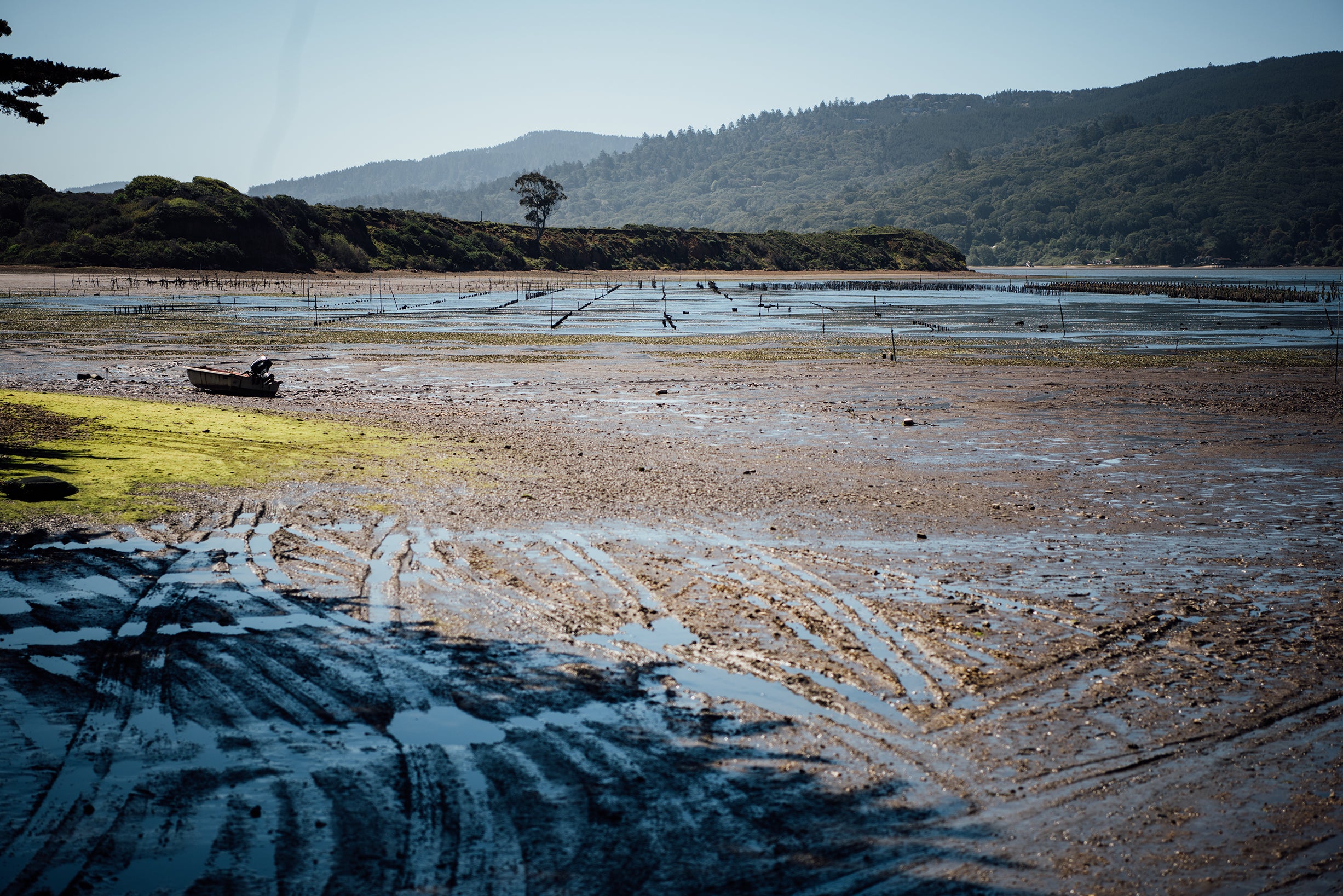Smoking offers a way to cook oysters that preserves all of the juicy, briny flavor of the fresh version.
Growing up in India, I always ate oysters cooked, and they were almost always fried—either served with a plate of rice and coconut fish curry or wrapped up inside a French roll with a little bit of mayonnaise. It was only after I moved to America that I really appreciated the beauty of a freshly shucked oyster and the different ways that oysters could be served with little to no adornment. But on a recent trip north of San Francisco, I found a happy medium that we all could admire—bivalves gently cooked with smoke, preserving the gentle hint of salt water from the ocean. This works out well for my mom, who avoids raw oysters every time we order them from a menu.
About 50 miles north of San Francisco city, near Point Reyes Station, lies a curvy stretch of the coast called Tomales Bay that’s famous for its Pacific oysters, which locals simply refer to as “Pacifics.” Here are six oyster-farming operations that grow and sell oysters. The Tomales Bay Oyster Company is the oldest, having been around since 1909. As the bay’s salt water and fresh water from Walker Creek mix, they create an environment that’s extremely conducive to growth. The result is a sweet and succulent oyster that carries a mild hint of brininess.

The Tomales Bay Oyster Company in Marshall, California, starts out with mesh bags of about 150 tiny “seeds” of baby oysters. These bags are inserted into the intertidal waters of the bay and left to grow at a depth of about three to six feet for about a year and a half to reach their market size.
On a particularly sunny day in April when I visited, the harvesters had already dragged their daily haul of bags from the bay’s waters. Seaweed, tiny crabs, and shrimp had made their way through these nets and were rinsed with a powerful jet of water to remove as much debris and sand as possible before the oysters could be sorted by size and bagged for sale. I tasted a freshly shucked golden nugget that had been pulled out of a newly harvested bag. The liquid that that the oyster sits in (also referred to as the liquor) was sweet, and the oyster was full of a fresh, briny flavor.
I grabbed four dozen oysters to take home that day, which was a lot more than I could possibly eat in a single sitting. Our host told us that about three to four miles north is the Marshall Store, a spot famous for serving a smoked version of these same oysters. We hungrily got into our car to seek it out.
Smoking has long been used as a method to preserve oysters for canning. In 1881, the Detroit Free Press reported on smoked oysters from China available for trade in San Francisco. Traditionally, these oysters were spread out and dried under the rays of the hot sun, followed by smoking with seaweed, which amplified the oceany flavor.
The technique used at the Marshall Store skips the drying and the seaweed stage. The oysters are first shucked and drained of liquor. They are left in their half-shell, seasoned, and then drizzled with a dash of olive oil to prevent them from drying out over the course of a few hours in a commercial smoker at 180°F. The final result is an oyster that’s been permeated with the smoky flavor of the burning wood while still retaining its juicy, succulent nature. There are other ways to smoke an oyster: There’s the cold smoking technique, where you keep the oysters on a bed of ice, and the smoking gun method, where you quickly smoke an oyster by placing it in a bag to create an enclosed chamber of sorts and then release smoke into it via a gun, which allows the oyster to absorb the smoke’s flavors quickly.
Our oysters arrived on a wooden tray, served on crostini with a bit of soft goat cheese and pickled red onions. Though they were lightly cooked, they were still every bit as juicy and tender as the fresh ones. They were the perfect happy medium between our mothers’ taste and ours, but for now, we were glad we didn’t have to share them. As for those four dozen oysters, they were shucked and eaten directly, some were smoked with cherry wood and the rest quickly fried and eaten.
